(First upload on April 17 2004. Last on October 24 2022) [ 日本語 | English ]
Carex oxyandra (Franch. et Savat.) Kudo
Mount Usu / Sarobetsu post-mined peatland
From left: Crater basin in 1986 and 2006. Cottongrass / Daylily
HOME > Plant list (植物リスト) > Cyperaceae (カヤツリグサ科) > Carex (スゲ属) > Carex oxyandra
Carex L. (スゲ)Section Acrocystis (ヒメスゲ) when establishedor Digitatae (ヒカゲスゲ)Himesuge (ヒメスゲ, 姫菅), hill sedgeLife form: perennial sedge Distribution: througout Japan. Taiwan (northern element) - disjunct distribution on alpine volcanic-ash soil in Kyushu and Shikoku Habitat: sunny, dry sites → flora on: Mount Usu, Mount Koma |
Chromosome number: 2n = 18, 20, 24 or 26
Heteroploid strains (with decreasing large chromosomes and increasing small chromosomes) developes normal bivalent chromosomes by meiosis, showing that the strains are genetically stable (Hoshino 1981)
|
|
Carex oxyandra on volcanoes in Hokkaido
 1
1
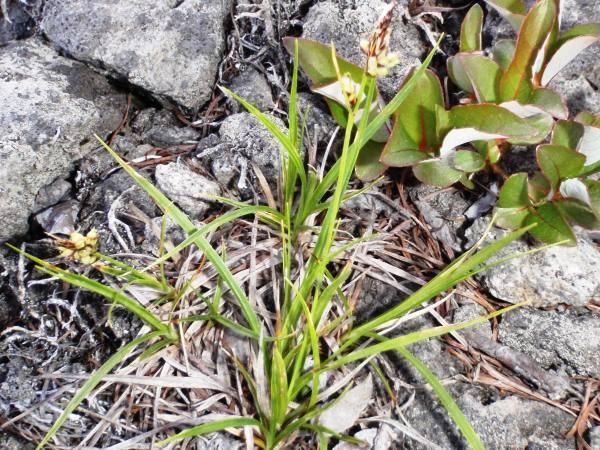 2
2
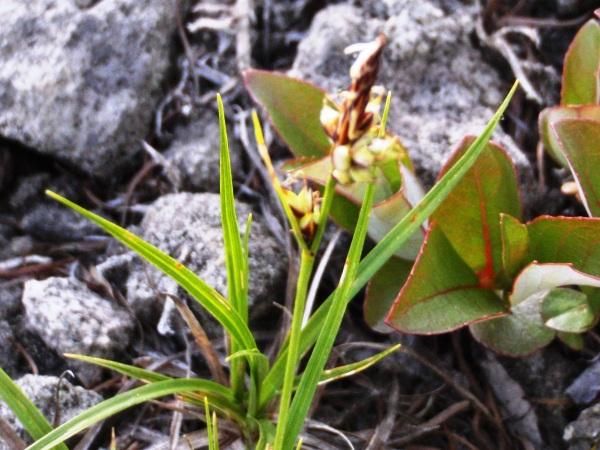 3
3
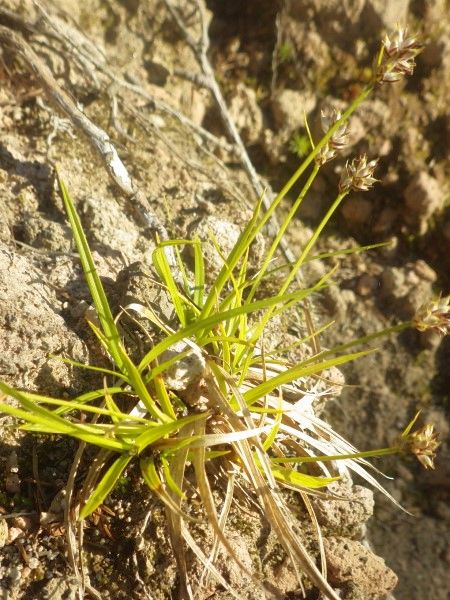 4
4
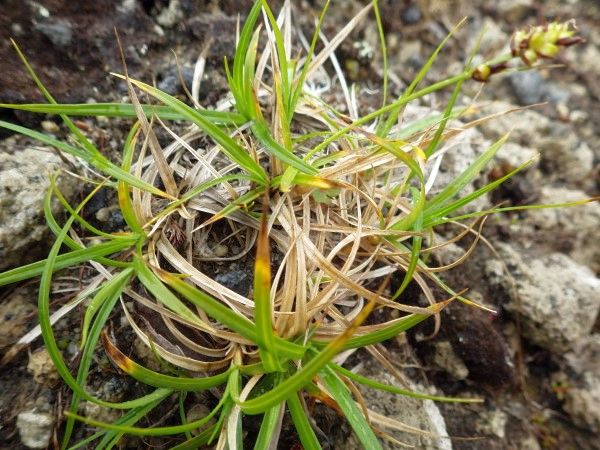 5
5
 6
6
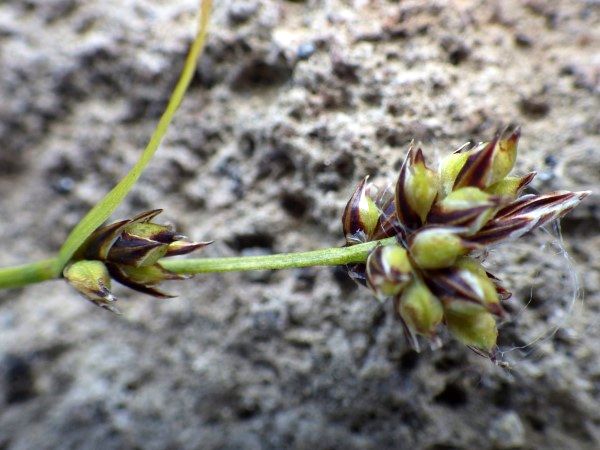 7
7
[1] on Mount Usu on July 6 2006. [2-4] on the southwest slope of Mount Koma ⇒ often developing tussock (谷地坊主). [2/3] on June 15 2010. [4] on July 8 2019. [5] along a trail over the forest line on Mount Tarumae on June 28 2022. [6/7] on the summit of Mount Koma on June 20 2022.
Distribution of plants in relation to microsites on recent volcanic substrates on Mount Koma, Hokkaido, Japan (Titus & Tsuyuzaki 2003).
On Mount Koma's volcanically devastated summit six common plant species colonized 12 microsite types differentially. Flat sites covered 65%, rills and gullies 16% and biotic sites 13% of the study area. Most species preferred sites near rocks and avoided flat and biotic microsites. Polygonum and Salix preferred gully bottoms and edges. Polygonum and Salix seedlings avoided flat areas and Polygonum seedlings strongly colonized gullies. Carex oxyandra seedlings preferred Salix patches. The distributions of seedlings and adult plants were correlated. Biotic microsites supported the largest Carex individuals, rills supported the largest Agrostis individuals and the largest Salix individuals were in gully bottoms and flats.